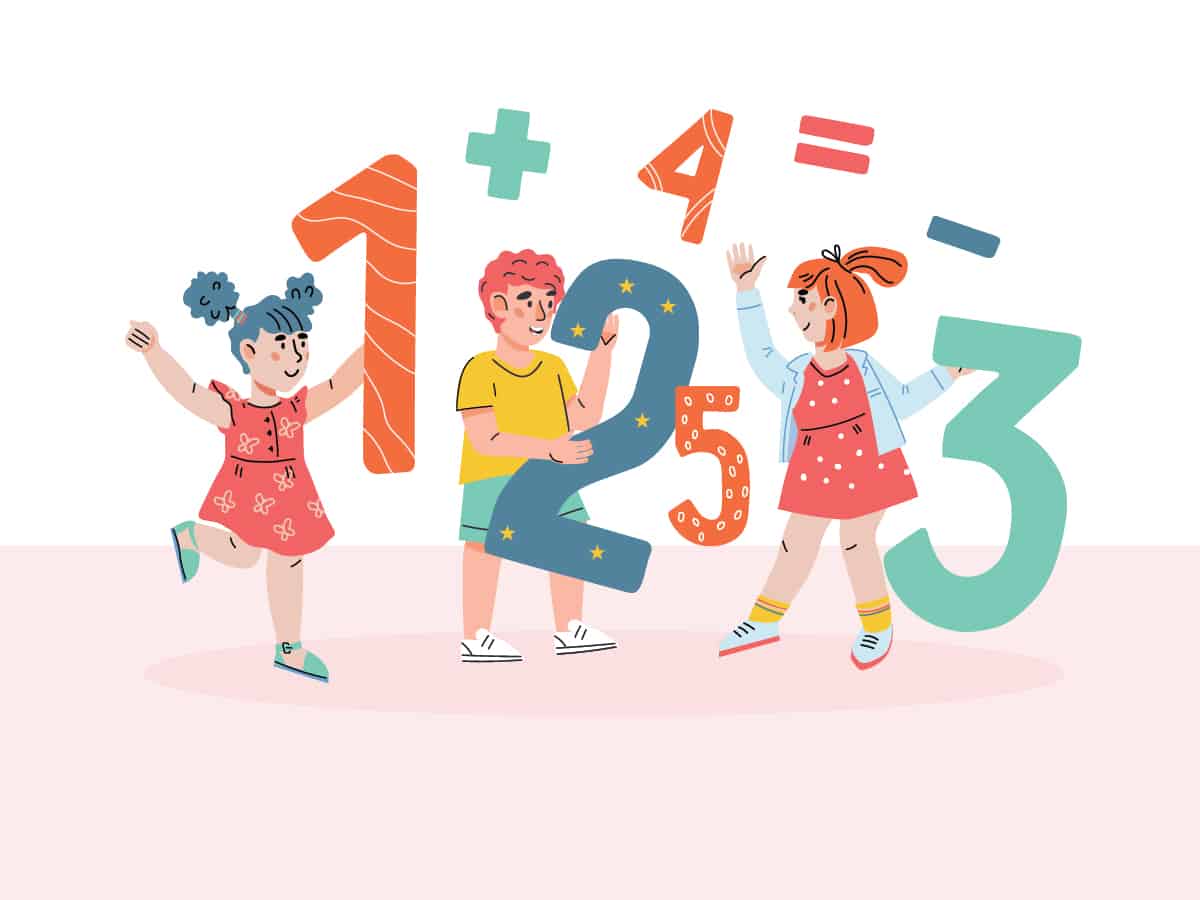Math Activities for Kids: Explore 9 Montessori-Aligned Ideas (+ FREE Printables)
Math activities for kids don’t have to be boring. In fact, the right ones can make math your students’ favorite subject! In this post, I’m sharing our favorite math games for kids that blend learning with laughter and keep students actively engaged.
As a Montessori educator, I love turning traditional concepts into playful, hands-on experiences. Creating and curating math games for kids has become a bit of a hobby for me, and is a game-changer in elementary classrooms.
When students are having fun, participation soars, confidence grows, and those tricky math skills finally start to click. That’s the magic of learning in disguise.
After introducing the fifth Montessori great lesson, the one all about numbers, I always follow up with engaging math activities for kids that spark curiosity and make abstract concepts feel approachable and fun.
Let’s take a closer look at what math activities for kids really are and how they can spark curiosity, build confidence, and make learning feel like play.
Math Activities for Elementary Students
So what kind of math activities should you introduce at the elementary level to boost kids’ basic math skills?
With so many options out there – math board games, math card games, math dice games, digital math games, and an endless stream of apps – it can be overwhelming to know where to start.
You could spend hours scrolling for the right fit.
Lucky for you, we’ve done the digging and rounded up our favorite Montessori-aligned math activities for kids that make math fun, hands-on, and engaging in any elementary classroom.
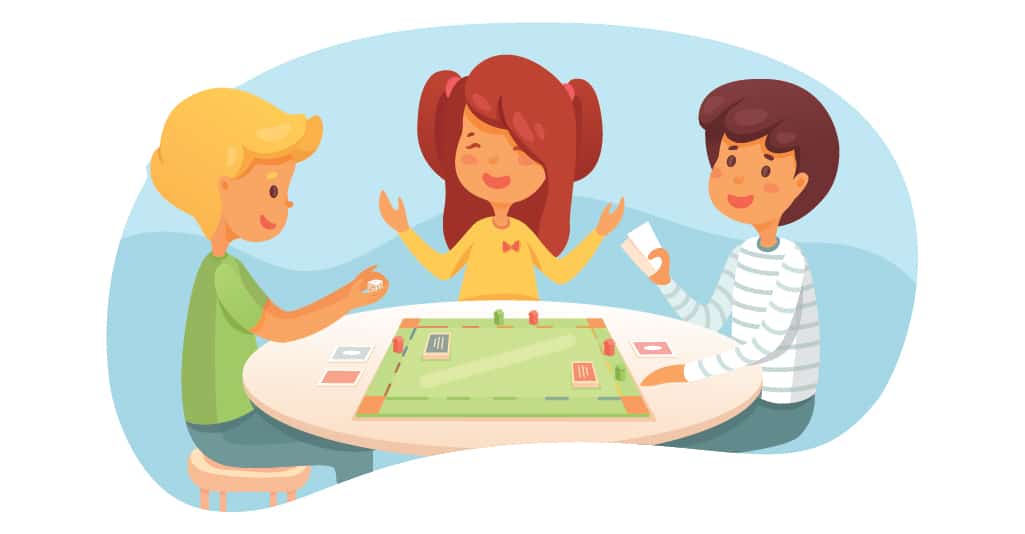
9 Montessori-Aligned Math Activities for Kids in Elementary
Fun lesson plans for elementary students should include math games! Try some of these out.
1. 101 And Done
Dice games are always a classroom favorite. Maybe it’s the excitement of not knowing what number will come up, or maybe it’s just that they’re fun, hands-on, and satisfying to roll.
No matter the reason, dice games offer tons of learning potential. They help students build fluency with basic operations, improve mental math, and strengthen problem-solving and fine motor skills.

Best of all, they make math feel fun, helping kids develop confidence and a more positive attitude toward learning math.
🎲 Don’t have dice for your math activities for kids?
Keep reading, we’ve got you covered with a creative alternative!
How to play 101 and Done:
This simple but strategic math game is a hit with students in grades 4–6. Whether they play in pairs, small groups, or even face off against the teacher, it’s guaranteed to get them thinking!
Each player gets six turns to roll a die. After every roll, they write down the number, but here’s the twist: they choose whether to count it as a ones place (e.g., 6) or a tens place (e.g., 60). Once the choice is made, it can’t be changed.
The goal? End the game with a total as close to 101 as possible, without going over. That’s where the name comes from!
🧮 Want to level it up?
Increase the target number and play “202 or Through” instead!
This game is flexible and easy to adapt for different skill levels.
As students play, they’ll need to keep a running total in their heads or on paper -boosting their mental math, addition, and number place value understanding all at once.
Give it a try in your classroom, your students will be hooked!

Subscribe to our email list and get our
Emoji Dice Download FREE!
Your elementary students will practice geometry and fine motor skills as they color, cut, and build a 3D die from a 2D net, before the game even begins.

Join in on the fun and learning! Subscribe to our email list, where we share Montessori-aligned information, activities, and anecdotes from the elementary classroom!
2. Prodigy
If you teach anywhere from Kindergarten to Grade 8, Prodigy is a must-try! It’s one of my go-to math activities for elementary students because it makes learning math feel like an adventure.
This curriculum-aligned app uses puzzles, challenges, and fun quests to teach over 1,400 key math concepts – while students play with engaging characters in a fantasy world. Best of all, many kids choose to keep playing (and learning!) even after they go home. Talk about learning in disguise!
I love that teachers can customize questions to match their current lessons, whether in the classroom or at home. Prodigy also adapts to each student’s level, using differentiated instruction to focus on areas where they need the most help.

In my classroom, Prodigy is a reward students earn after finishing other tasks. This helps them learn to manage their time while still reinforcing math skills in a fun and meaningful way.
It’s a perfect blend of technology, engagement, and real learning – students enjoy it, and teachers and parents appreciate the growth. Win-win!
🎥 Check out this video to see how it works!
🎯 WHEN TO USE THIS GAME: This game is great to use during indoor recess, in a math rotation station, and for early finishers.
⭐️ Did I mention that my students and I use the free membership?
For that reason alone you should go and check out this amazing math activity for kids!
3. Mathematical Jenga
Take a block from the bottom, put it on top – but first, solve a math problem!
This classic game gets an educational twist and is a hit with students in Grades 1–6. Just build your Jenga tower as usual, but after each player pulls a block, they must answer a math question.
💡Here’s what you’ll need:
Jenga or wooden blocks
Masking tape
Permanent marker
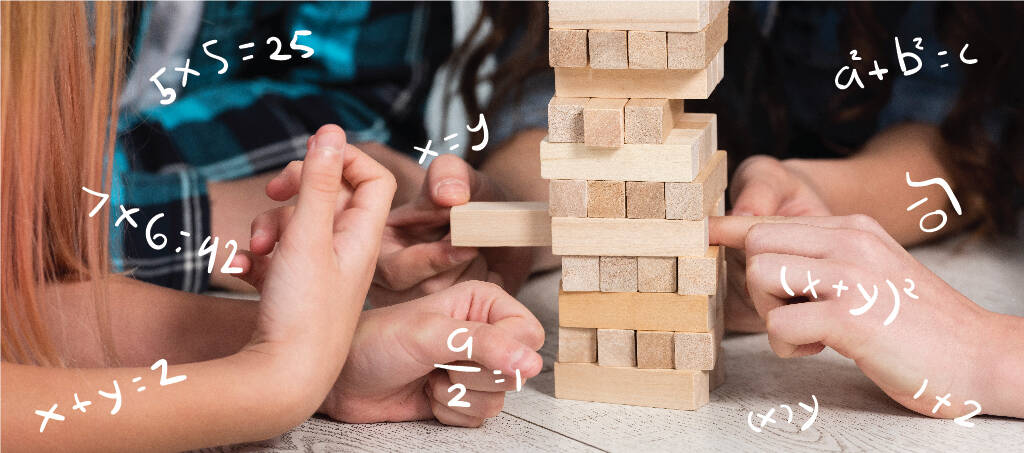
Place a piece of masking tape on the side of each block and write a math question (without the answer). I use multiplication facts up to 15, but you can use addition, subtraction, division, or whatever your students need to practice.
💡 Teacher Tip: Don’t want to write on your blocks?
Use flashcards instead! After pulling a block, players draw a flashcard and must answer the question correctly before placing their block on top of the tower.
As students play, they:
Carefully pull a block from the tower
Read and solve the problem on the block
Record their question and answer in a notebook (optional)
Place the block on top – if their answer is correct!
💡 Add Some Friendly Competition!
Turn it into a math challenge – keep score, play in teams, or set a time limit for answering each question.
DIY math activities for kids don’t get much better than this – simple setup, high engagement, and lots of learning disguised as fun!
4. Top-It
Never heard of Top-It? It’s a favorite among my students because it’s similar to the classic card game War, which they already love!
Making math practice fun is key, and Top-It does just that. Plus, it’s versatile and can be played in different ways.
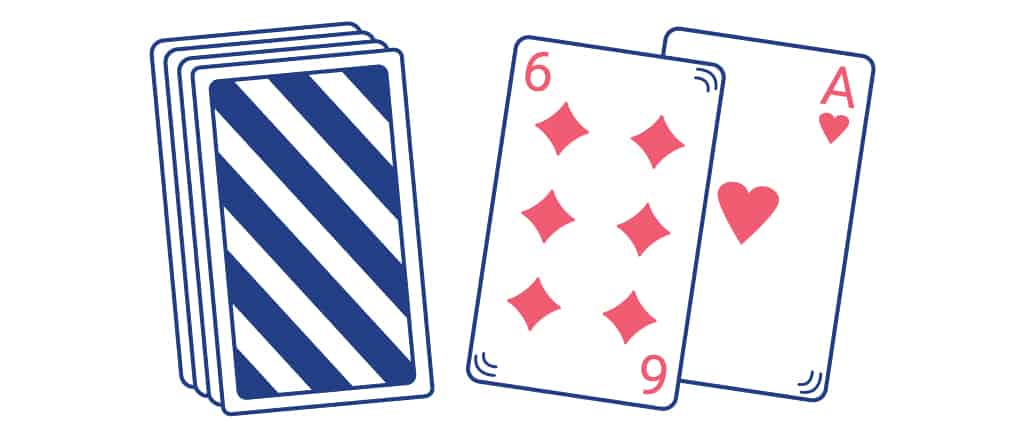
How to Play Top-It with Playing Cards
Shuffle and deal all cards evenly to players.
Choose a math operation to practice (I usually start with addition).
Use cards Ace (1) through 10 for beginners. For advanced players, add Jack (11), Queen (12), King (13), and even jokers as wild cards.
Without looking, players flip over the top two cards on their pile and perform the chosen operation (add, multiply, etc.).
The player with the largest result wins all the cards from that round.
When all cards have been played, the game ends.
🎥 Here’s a helpful video showing two versions of Top-It:
♣️ NEED CARDS?
Check out these awesome playing cards that we can’t get enough of. Dogs, cats, National Parks, jumbo size, or tiny – whatever they may look like – playing cards are great for honing elementary math skills!
How to Play Top-It with Flashcards:
Top-It using flashcards, brilliant concept, right?I!? I can’t even take credit for this activity, one of my fifth-graders came up with it while he was flipping through our classroom’s multiplication flashcards.
This simple math activity quickly became a classroom favorite. Here’s how it works.
- Shuffle and divide flashcards evenly, question side up (to keep answers hidden).
- On the count of three, players flip a card from their stack and solve the problem.
- The player with the highest sum or product wins all cards in play. For subtraction or division, the lowest difference or quotient wins.
- Players check the answer of the player to their left, if an error is found, the checker keeps the card.
- If players tie, they play again until one wins all the cards.
- The game continues until all cards are won.
Don’t have math fact flashcards?
Depending on your student’s math skills or what they are studying you can use addition, subtraction, multiplication, or division flash cards. You can get the perfect math fact flashcard bundle here.
5. The King of Math App
If you’re looking for a fun, Montessori-aligned way to reinforce math skills, The King of Math (and its sequel King of Math 2) is a must-try. These interactive apps turn math practice into an exciting adventure that your students won’t want to put down.
My upper elementary students love the game’s clear instructions, fun graphics, and motivating progression system—and honestly, I do too!

The app covers a wide range of math concepts, including addition, multiplication, number sequencing, estimating, square roots, and order of operations. It’s a great fit for Montessori classrooms because it encourages self-paced learning and independent exploration.
Even with just the free levels, students get plenty of opportunities to sharpen their math skills in an engaging way. And yes, adults have fun with it, too!
💡Teacher Tip: Pair This Game with a Unit on the Middle Ages
As students solve math problems, they level up from humble farmers to carpenters, jesters, and even kings or queens. It’s cross-curricular learning in action – That’s so Montessori!
Want a sneak peek? Check out this short video preview:
Even though only a few levels are available for free, they’re more than enough to get students interested and engaged. Give it a try – you might just become the king or queen of math yourself!
6. Back to Back
Looking for a fast-paced, brain-boosting math game that your students will love? Back to Back is a favorite in my classroom, perfect for indoor recess or filling an extra 10–20 minutes with something engaging.
Best suited for grades 3–6, this game sharpens addition and multiplication skills while encouraging strategic thinking and quick recall.
Here’s how it works:
Two players stand back to back, each writing or holding up a number (usually 2–9). A third student, the “Caller,” announces the sum or product of the two hidden numbers. Players then use mental math to figure out what number their opponent must be holding.
For example, if you’re working with addition and holding a 3, if the Caller says “9,” you’ll need to figure out that the other player has a 6. The first to correctly guess wins the round and stays in the game, while the runner-up picks the next challenger.
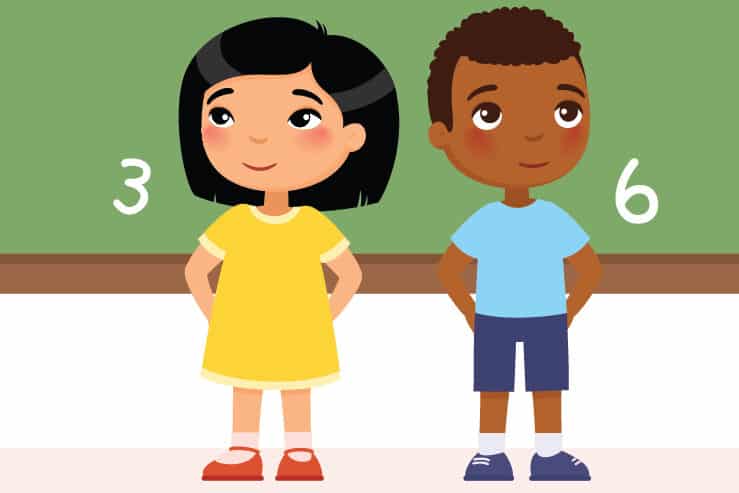
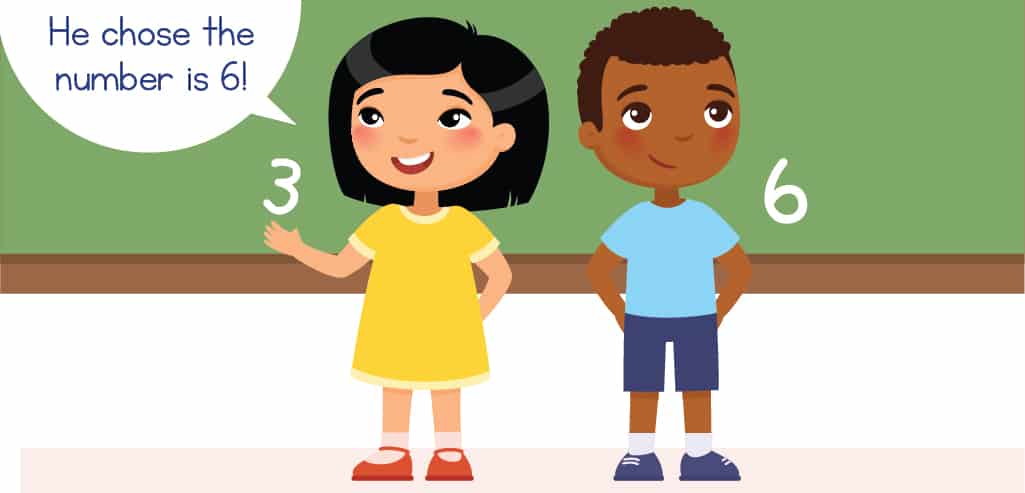
All you need is something to write on (a whiteboard, chalkboard, or index cards), writing tools, two players, and a speedy Caller. You can even swap writing for playing cards with numbers 2–10.
Once students catch on, they’ll be hooked – many aim to become the coveted Caller, a role that rewards mastery of math facts and fast thinking.
7. Guess My Number
This versatile and interactive game, adaptable for first graders up to students in the 6th grade, offers a range of modifications. It’s easy to adapt for different ages and math levels, making it a great go-to for whole class games, small groups, or partner work.
What You Need:
✔️ A printed 100 chart for each student (tip: keep reading for a free printable!)
✔️ Dry erase markers
✔️ Dry erase sleeves
How to Play:
One student secretly picks a number from the 100 chart (you can limit it to 1–20 for younger kids). The rest of the group tries to guess the mystery number by asking yes/no math-related questions like:
🔢 “Is it greater than 50?”
🔢 “Is it a multiple of 4?”
🔢 “Is it an even number?”
🔢 “Is it divisible by 3?”
🔢 “Does it come before 30?”
As students hear the answers, they use their 100 chart to cross off numbers that don’t fit and circle ones that might be correct. This builds logical thinking and helps reinforce number sense.
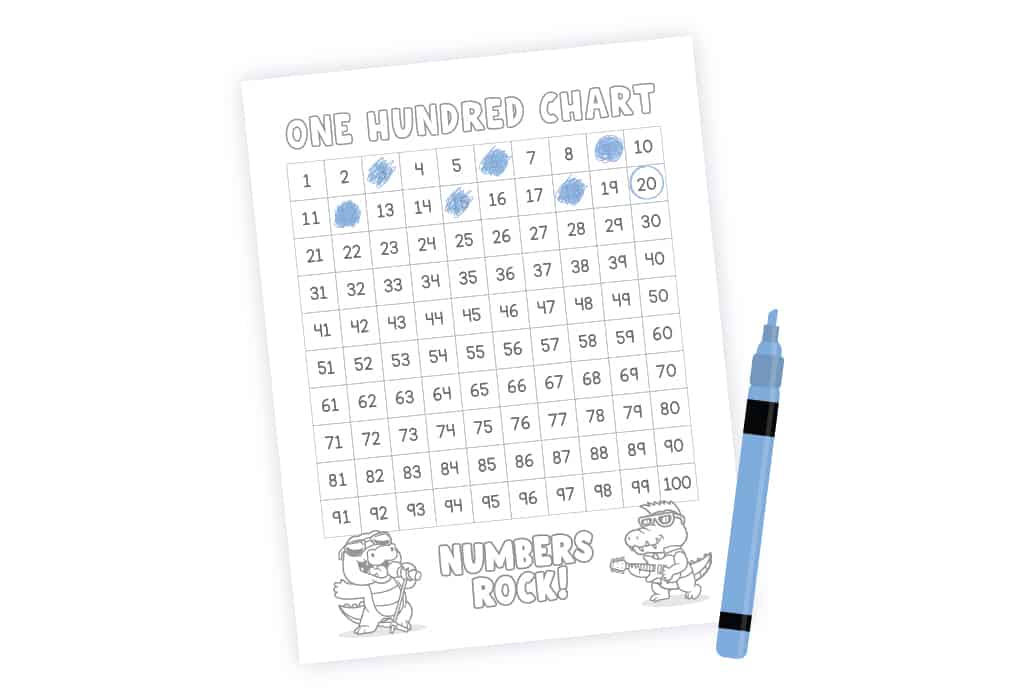
Whoever correctly guesses the number first (by asking “Is it ___?”) wins the round and becomes the next number picker.
Get Your Free 100 Chart!
Subscribe to our email list and get a printable One Hundred Chart, totally free!
Print a copy for each student and have them color in their chart for a personalized touch. Then laminate it for long-term use – perfect for repeated games and classroom fun. You’ll love watching their math confidence grow as they ask smart, purposeful questions to crack the code!
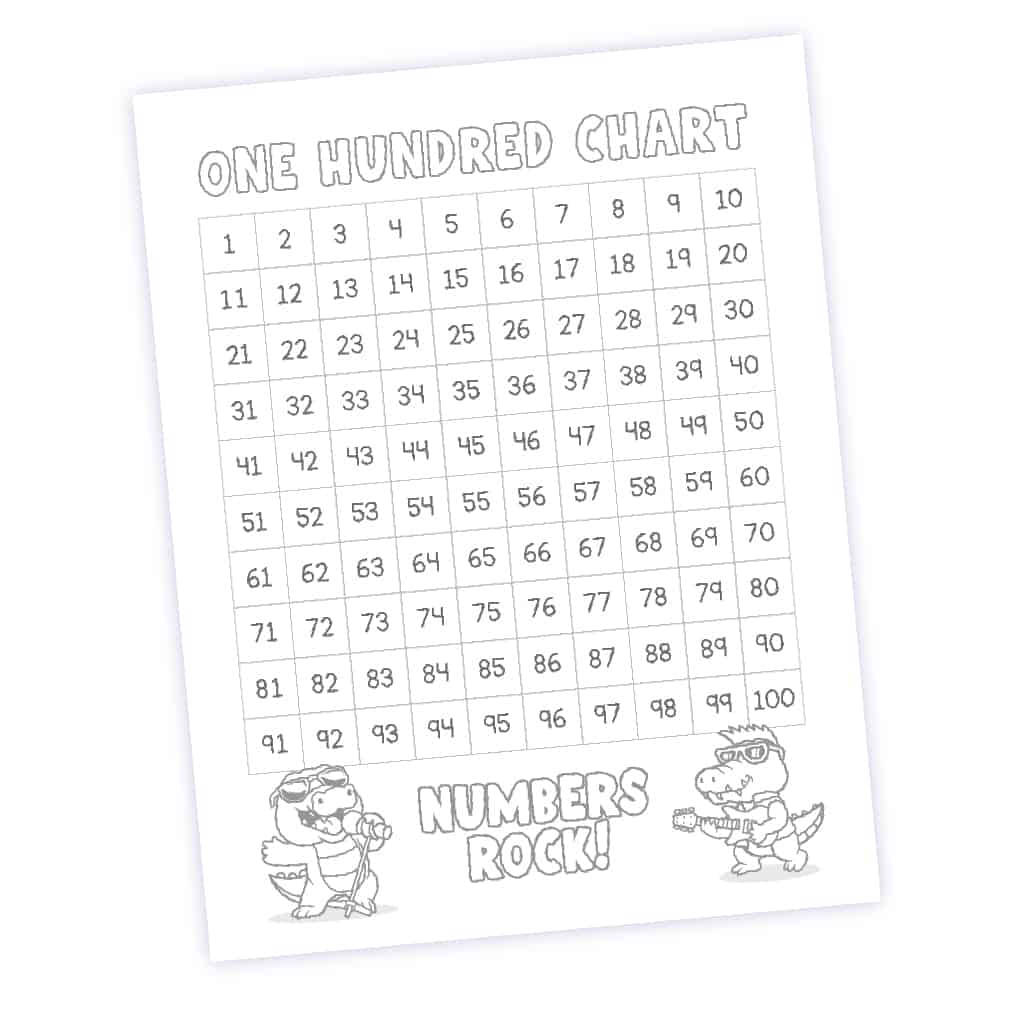
Join in on the fun and learning! Subscribe to our email list, where we share Montessori-aligned information, activities, and anecdotes from the elementary classroom! We promise we won’t spam you.
8. Search ‘Math Activities for Kids’ on TPT
Teachers Pay Teachers (TPT) is a go-to site for educators looking for quality classroom resources.
From full lesson plans to simple games, you’ll find thousands of downloadable materials to support your students’ learning. Just type “math activities for kids” into the search bar, and you can filter by grade, subject, price, and format.
One of our favorite resources on TPT is our own No-Prep Digital Math Games with Worksheets – designed especially for upper elementary classrooms, but great for advanced younger students or middle schoolers too. These games are colorful, easy to use, and packed with math practice that doesn’t feel like work.
In order to increase student engagement and solidify previously learned arithmetic skills, we develop eye-catching math games that can be used in any classroom environment, virtual or in-person.

Students practice addition, subtraction, multiplication, and division through engaging, game-based learning, perfect for reinforcing key skills. We’ve also included two follow-up activities that challenge students to apply what they’ve learned in fun and creative ways.
Created by our team at That’s So Montessori, this resource blends educational value with joyful design. We wanted something that’s effective, playful, and reusable, and this fits the bill!
Whether you’re teaching in-person or online, this math activity is a simple way to add variety and energy to your lessons.
🧐 Curious about what else we create? Check out our free sample pack!
9. Numberle
Looking to challenge the more advanced mathematicians in your elementary classroom? Try Numberle, the math version of the popular word game Wordle.
While Numberle is similar to Wordle, there are distinct differences. Instead of words and letters, the components of Numberle are numbers, mathematical symbols, and the equations that they make.
Players have to figure out what the math sentence is and have a limited amount of attempts to do so.
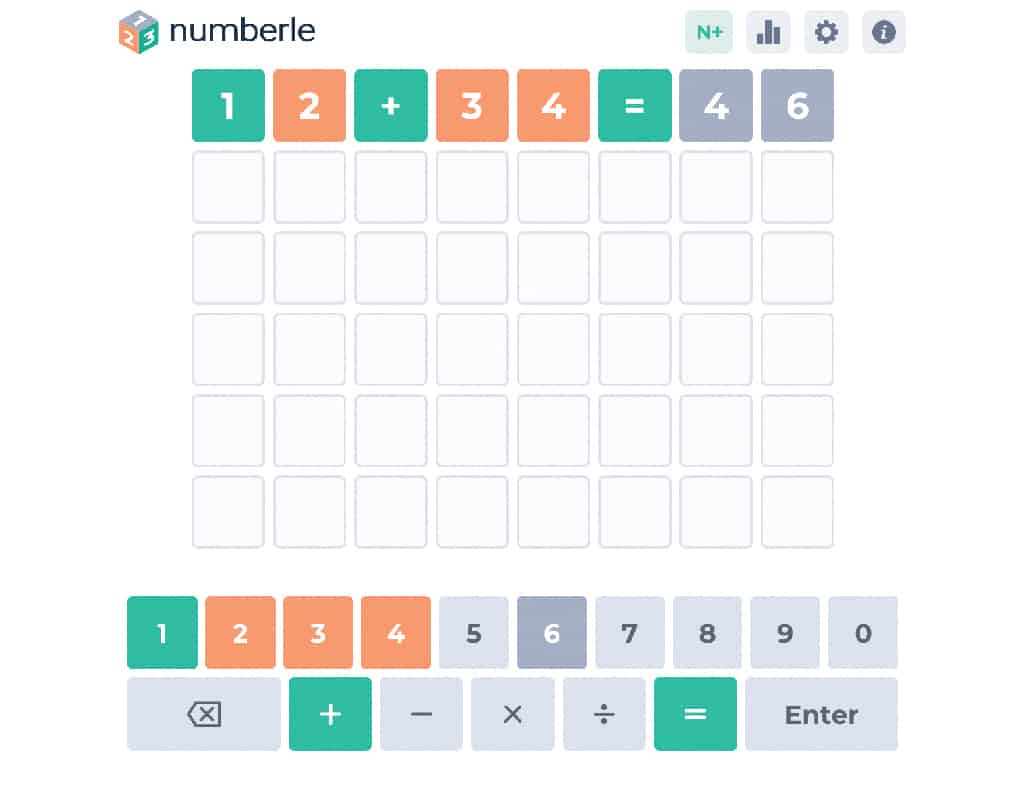
HOW TO PLAY NUMBERLE:
You have six tries to accurately guess a mathematical equation. All operations – addition, subtraction, multiplication, division – are a possibility and can come in any order, so knowledge of the order of operations is important.
In each line, players enter their own correct equation to find out what numbers and arithmetic signs are in the equation.
If the number or sign is in the equation, but in the wrong place, it will be highlighted in orange. If the number is in the correct place, then it will appear green. If there is no number or sign in the equation at all, the colour will be grey.
Here’s an example of a game that was completed correctly in 6 tries:

Pair this math activity for kids with the study of the order of operations and delight your upper elementary students with digits.
💡 What I really appreciate about Numberle:
Unlike Wordle, Numberle comes with the added bonus of unlimited games daily. That’s right! No need to watch the time tick away and wait twenty-four hours for your next go at this activity. Students can keep computing and learning!
What’s also great is players have the option to determine the difficulty level by choosing any equation length between 5 and 12, as well as the operators to be involved in a game.
Just head over to the settings and make some changes. As a teacher, I think this adjustable aspect rocks and makes this math activity adaptable for elementary students of varying skill levels.
🔤 What do you think the part of speech for the word Numberle is?
If you need a refresher on the 8 parts of speech click here! Our comprehensive guide will help you learn all about them!
You may also want to check out our Parts of Speech Scavenger Hunt!
FYI – Numberle would be a proper noun. Did you get that right?
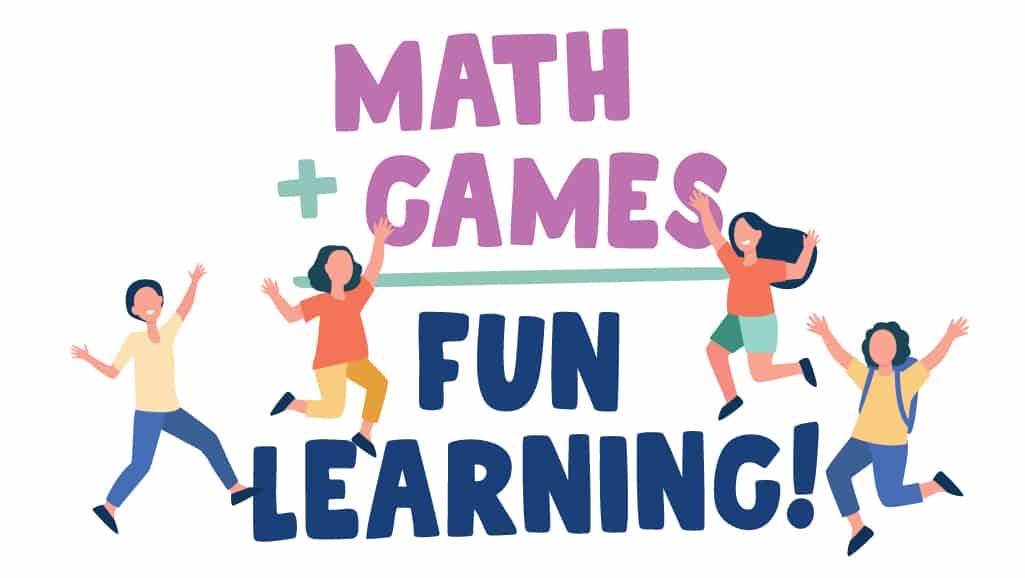
Game-Based Learning is Learning in Disguise!
Ok, but let’s be real, fun is not the most common adjective used to describe anything to do with math class.
In fact, studies show that less than half of students in North America are proficient in math. Well, it’s about time to change that sentiment! Are you with me?
When implemented effectively, game-based learning in math can harness a student’s innate desire and love for play while guiding them toward an understanding and even mastery of a skill they are learning.
We like to call this learning in disguise, or stealth learning.
Learning in disguise is the process of using activities and other unique tactics to teach topics. Presenting a lesson in a way that children feel they are playing as opposed to learning makes them more drawn to the topic and open to learning.
This takes some of the pressure off of learning and as a result, hooks their attention.
I apply this concept often and across all subject areas. I find that it is through using fun activities in math however that the benefits of game-based learning soar.
Attention is held, smiles are abundant, laughs are shared, and so much learning is taking place unbeknownst to the students.
Research indicates that games can encourage organic moments of learning in elementary classrooms. When at play students are oblivious to the grand absorption of knowledge taking place within their brains.
Why Use Math Activities For Kids Learning?
Regardless of being in a Montessori or traditional school, it’s known that using fun math games with elementary-aged students leads to increased student participation.
But more importantly, math activities for elementary students allow kids to take risks and interact positively with their peers.
While it’s mandatory to follow the curriculum and teach things like division, perimeter, and algebra, while also developing students’ vocabulary, it can all be done with a little bit of fun. And sometimes a whole lot of fun!
If you haven’t considered the benefits of using math activities for kids’ learning, here are some reasons to add them to your curriculum.
💡When used in the classroom, math games are known to:
✓ help students develop an enthusiasm for what they are studying;
✓ teach productive struggle;
✓ improve observation skills;
✓ lead to brain growth;
✓ develop strategic thinking;
✓ encourage complex skill development.
Basically, while students are playing, they are subconsciously learning but unaware of the knowledge they are accumulating.
It’s important to note that math games also accommodate various student learning styles. Visual learners, auditory learners, kinesthetic learners, and social learners all benefit from using amusing activities in math class. Something fun for everyone!
Students in the second stage of the four Montessori planes of development, our beloved elementary-aged learners, are known for their inquisitive minds.
When learning is fun, understanding underlying concepts and finding solutions to complex math problems happens naturally.
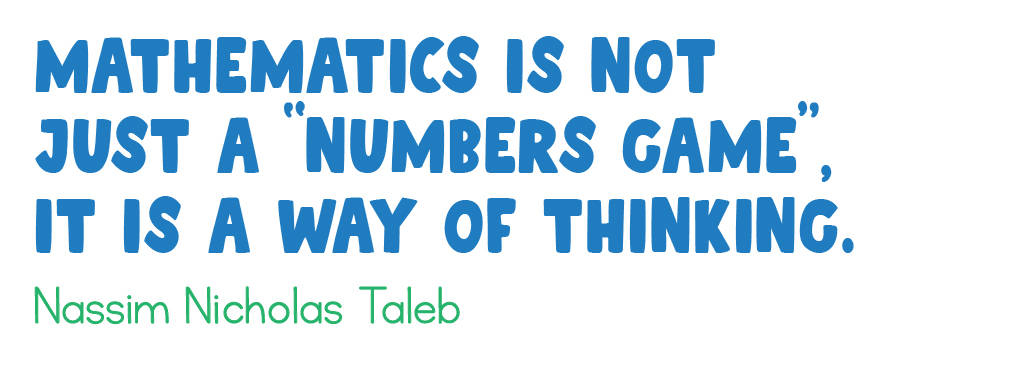
Using Montessori-aligned math activities in your elementary classroom to supplement lessons may sound like a daunting task on top of all the other tasks teachers tote, but let us tell you, it is one that is surmountable when accompanied with some enthusiasm and joy.
The Wrap-Up: Math Activities for Kids
Take a lighter approach to math by adding some Montessori-aligned math activities for elementary students to your classroom. The math games outlined above can be easily implemented into almost any learning environment.
Math activities for kids that have a direct connection to a classroom topic are a great way to spark a student’s interest, hold their attention, and expand their interest in learning.
Still not sure about adding game-based learning to your classroom? Try one of the fun math activities for kids listed above with your elementary students and witness the results for yourself.
💡 Let the fun begin!
Go on and encourage elementary students to have fun when practicing fundamental math concepts. Everyone benefits from the learning and the smiles that are shared.
And while they’re having fun learning math, consider introducing your elementary-aged children to our activity book – Draw, Doodle, Scribble, Think, Create. Read about why your kids need this activity book with unique drawing prompts here!
It’s the perfect resource for creative exploration, especially after engaging in educational math games.


